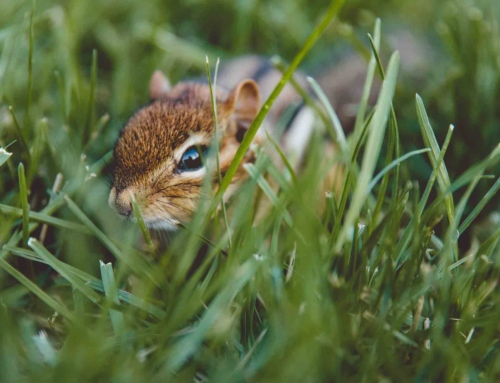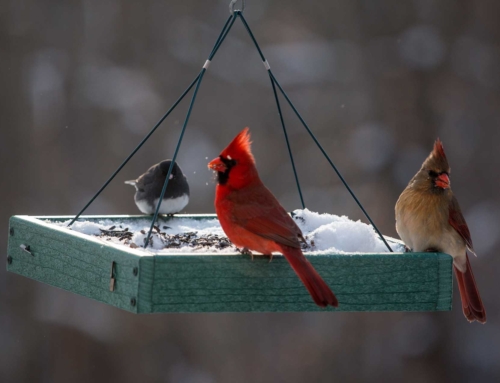Should You Feed Migrating Birds?
Disclosure: This post may contain affiliate links
A common question among people new to feeding birds is whether or not you should offer food to migrating birds. Here's what you need to know.
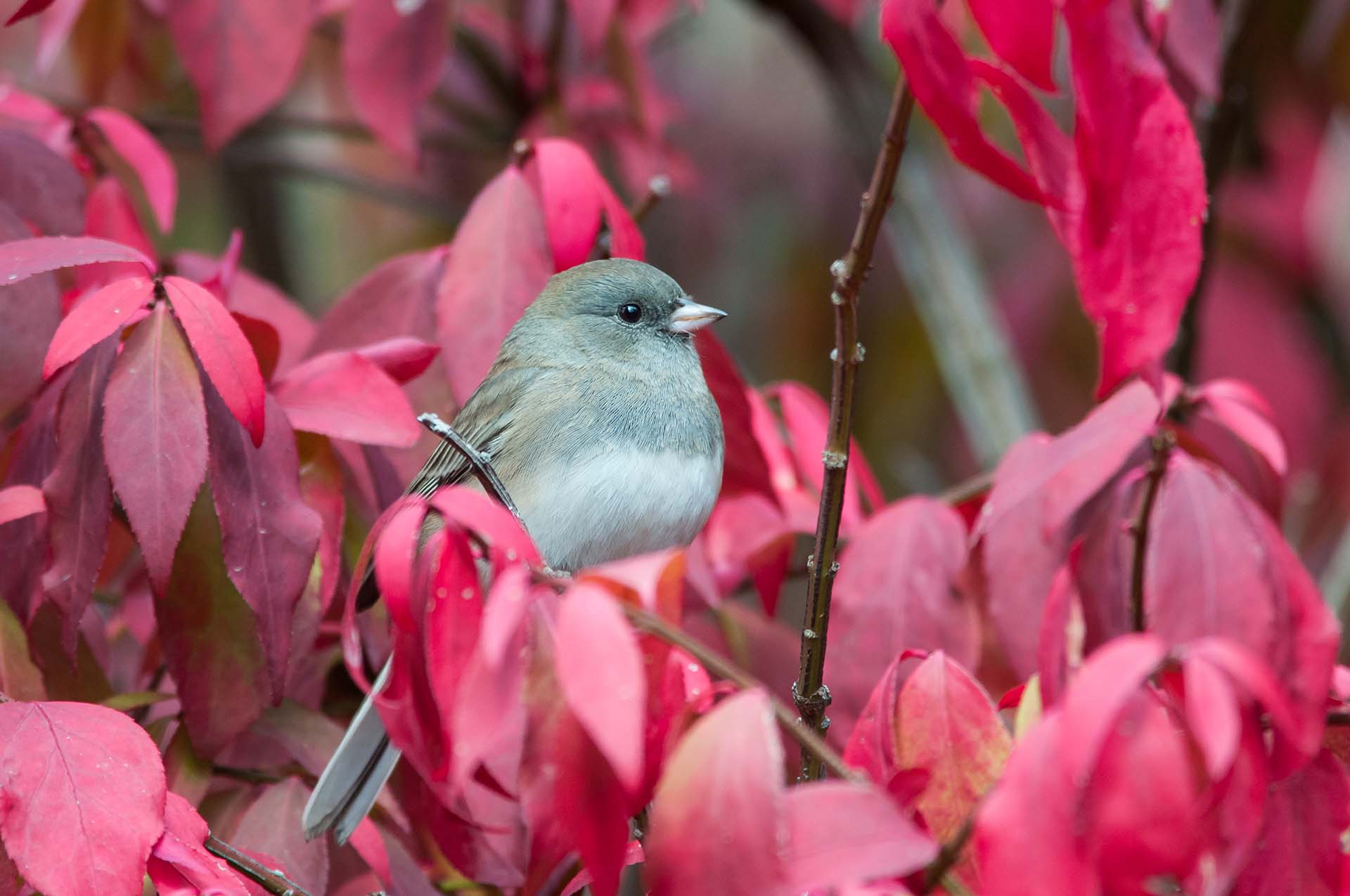
What's in this post
Did you know that watching birds can boost your mental outlook, decrease stress, improve work performance, and can even help improve the attention span of some children?
Not only that, having a backyard that has a reliable food and water source can help alleviate some of the hardships that birds face, namely things such as sustenance scarcity, habitat loss, and climate change.
A common question among people new to feeding birds is whether or not you should offer food to birds during migration.
To answer it, let’s take a look at some myths about feeding birds in the fall, then talk a little bit about the right foods to choose, and then finish up with some tips to help you get started.
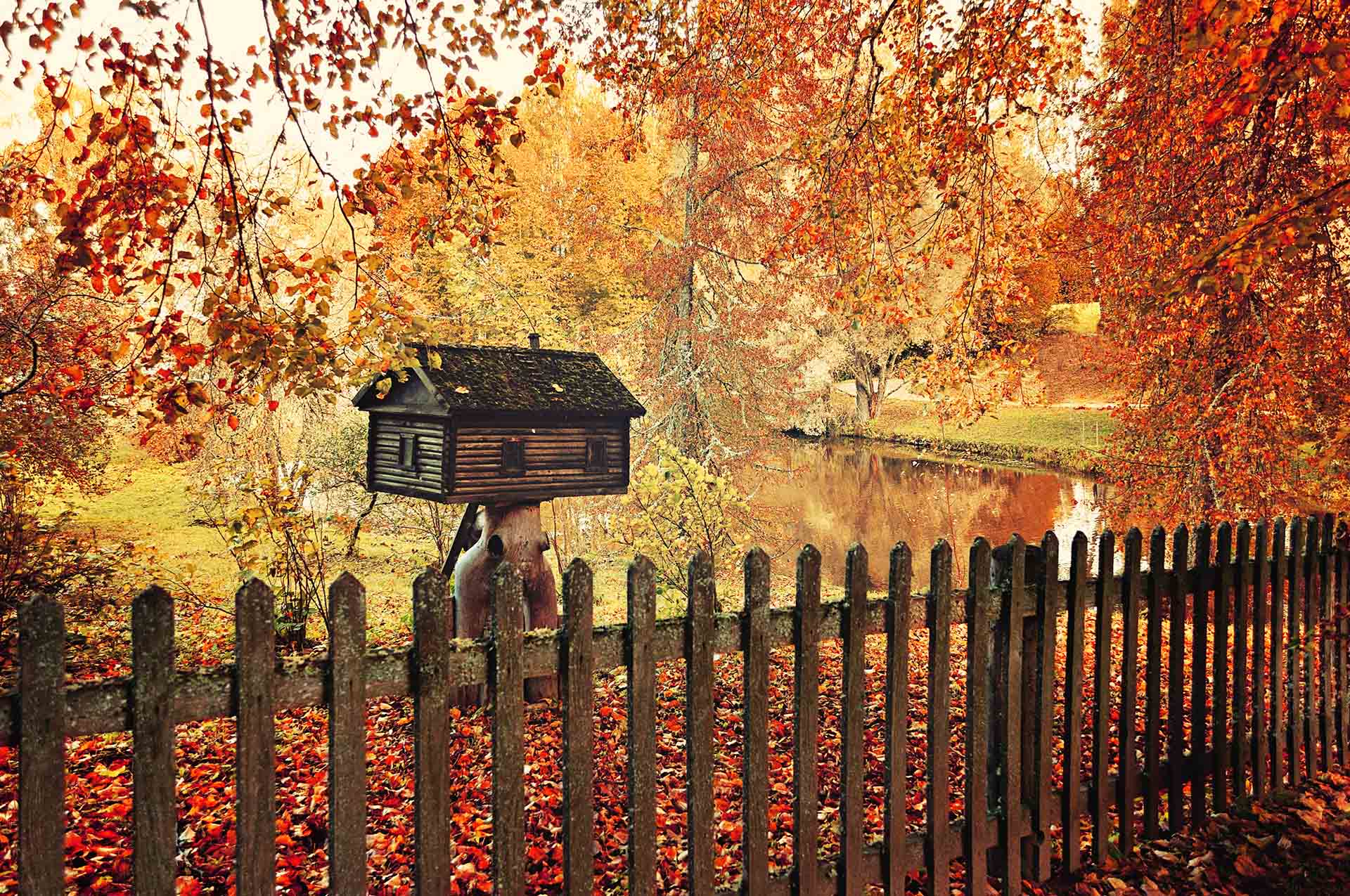
Autumn bird feeder / Source
Popular Fall Bird Feeding Myths
Some wide-spread myths that surround feeding the birds in fall:
Myth #1: If birds have a reliable source of food available in the fall, they won’t migrate.
Not true, according to The Cornell Lab of Ornithology. Keeping feeders up does not influence whether a bird will start its migratory journey; some factors trigger migration. The most significant one is day length, but climate and even instinct and biological calendar also play essential roles. As birds head south, they’ll take advantage of feeders where available, to fuel their journey.
Myth #2: Since birds migrate, there aren’t birds around to feed in the fall.
While it’s true that many birds will rely less on feeders in autumn because natural food sources like berries and seeds are still abundant, your feeders will see plenty of visitors from resident birds and migrators looking for an easy snack.
Myth #3: You can’t feed birds because they’ll starve when you go on future vacations.
Some backyard birders mistakenly believe that once you start feeding backyard birds, it makes them too lazy or dependent upon the feeders. This belief is untrue. While birds appreciate the food, typically, they don’t solely rely on it for sustenance unless something has happened to prevent them from foraging for natural food sources, like a massive storm or natural disaster.

Wooden birdhouse on a tree with a bird resident / Source
Reasons to Feed Birds in Autumn
There are plenty of reasons to feed the birds in autumn, here are just four:
- You’ll help birds to build fat reserves for the stored energy they’ll use during migration.
- It provides a natural source of food for migrators passing through.
- It provides supplemental food for all when the natural sources of food begin to disappear.
- Birds will remember they were well-fed, so they’ll return in spring.
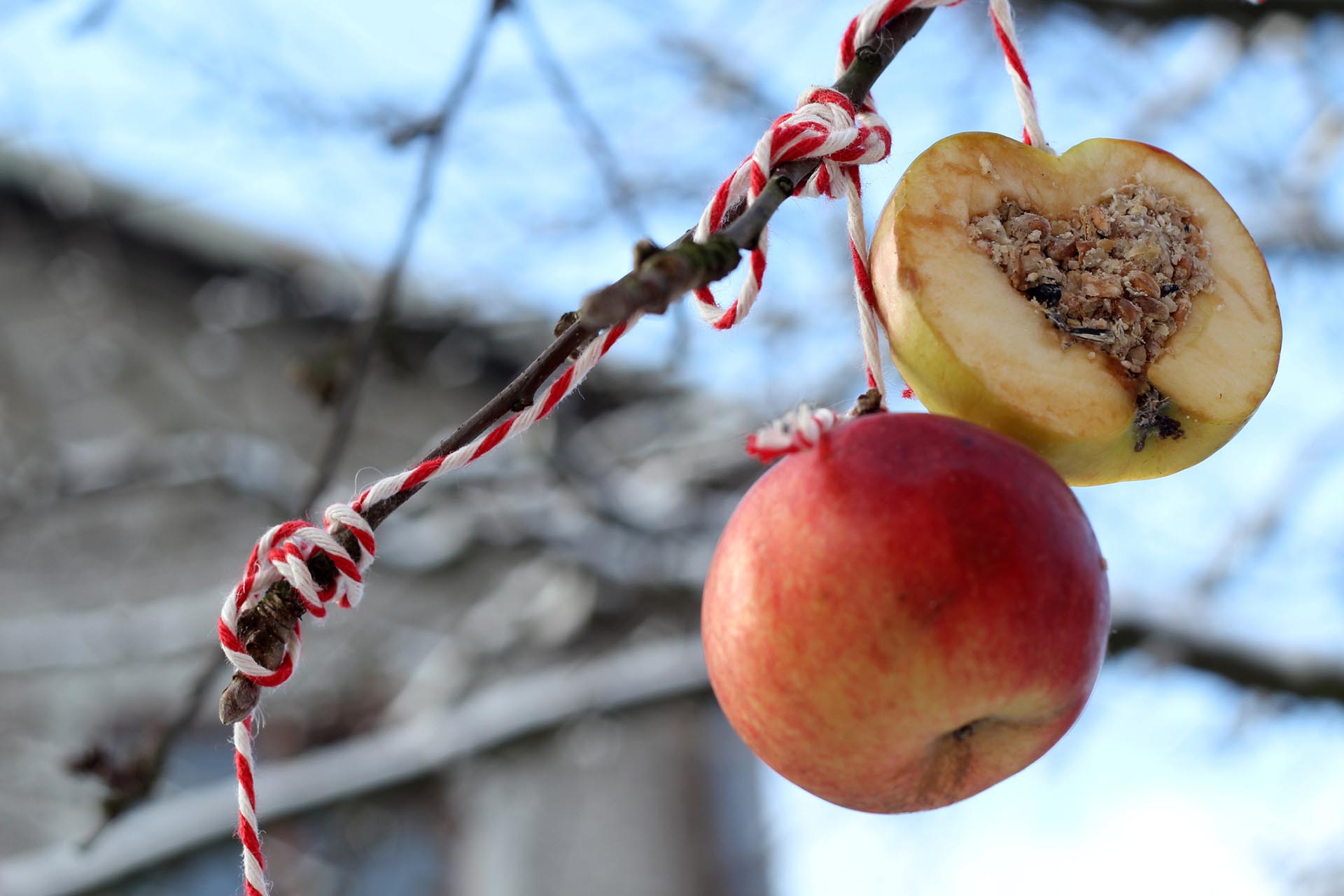
Homemade bird treat hanging in tree / Source
Foods for Fall Feeders
The best diet for migrating birds is the one that offers solid nutrition and abundant energy for their long journeys. Look for densely caloric foods with high oil content, and remember to provide an array of foods.
The foods that work for best for fall birds include:
- Black oil sunflower seed
- White millet
- Niger (also known as Nyjer or Thistle)
- Safflower seed
- Nuts
- Cracked corn
- Nectar
- Suet
You can also offer backyard birds some chopped or sliced fruit. Watch to see what types of birds visit feeders and adjust food supplies as necessary to meet their needs.
And don’t worry if you have to be gone from your feeders for a while either, birds adapt quickly to changing food sources. It may take them some time to rediscover your feeders when they start filling them again, but they’ll come back.
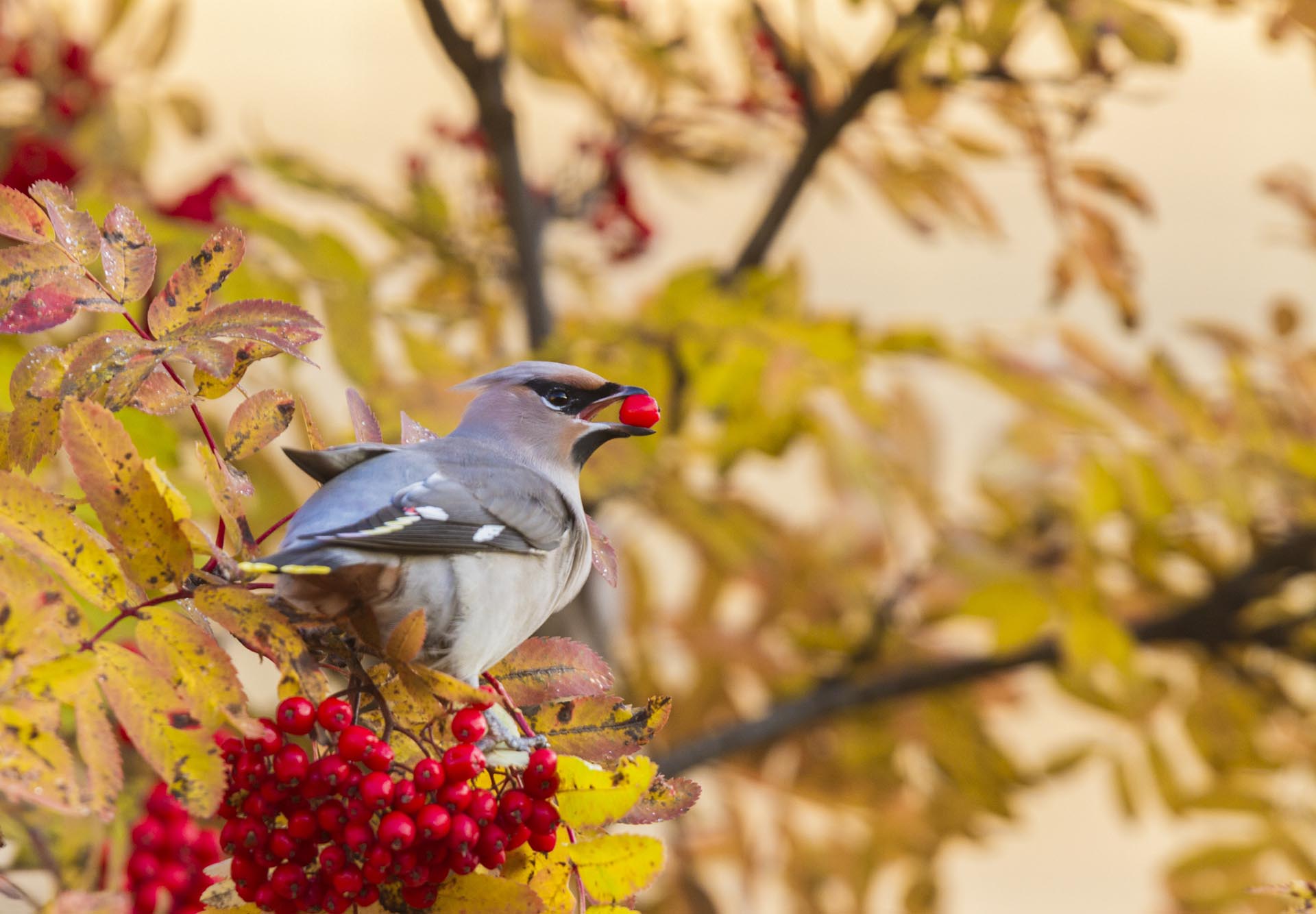
Cedar waxwing. eating a red berry / Source
Tips for Feeding Migrating Birds
Autumn is the perfect time to get the backyard feeding stations ready for winter.
Here are a few tips for a healthy and active fall flock:
- Avoid perennial garden clean-up and leave coneflowers, asters, and other tall plants to provide perches and seeds for all types of birds.
- Wash and disinfect existing feeders and baths to prevent spreading disease among birds or migrators. Check for damage, and repair or replace as needed.
- Winterize birdbaths by adding an immersion-style heater to keep the water from freezing and keep them filled, even in colder weather.
- Squirrel-proof bird feeders with several different methods to discourage them from depleting feeder supplies.
- Protect backyard feeding stations from domesticated predators such as dogs and cats.
Finally, make your windows safe for migrating birds.
When flying, birds can get thrown off by inside lights or get disoriented by smooth, transparent glass. More than one billion birds die from crashing into windows and buildings every year. These numbers are simply staggering, and a large number of these window strikes occur in fall when birds are busy migrating.
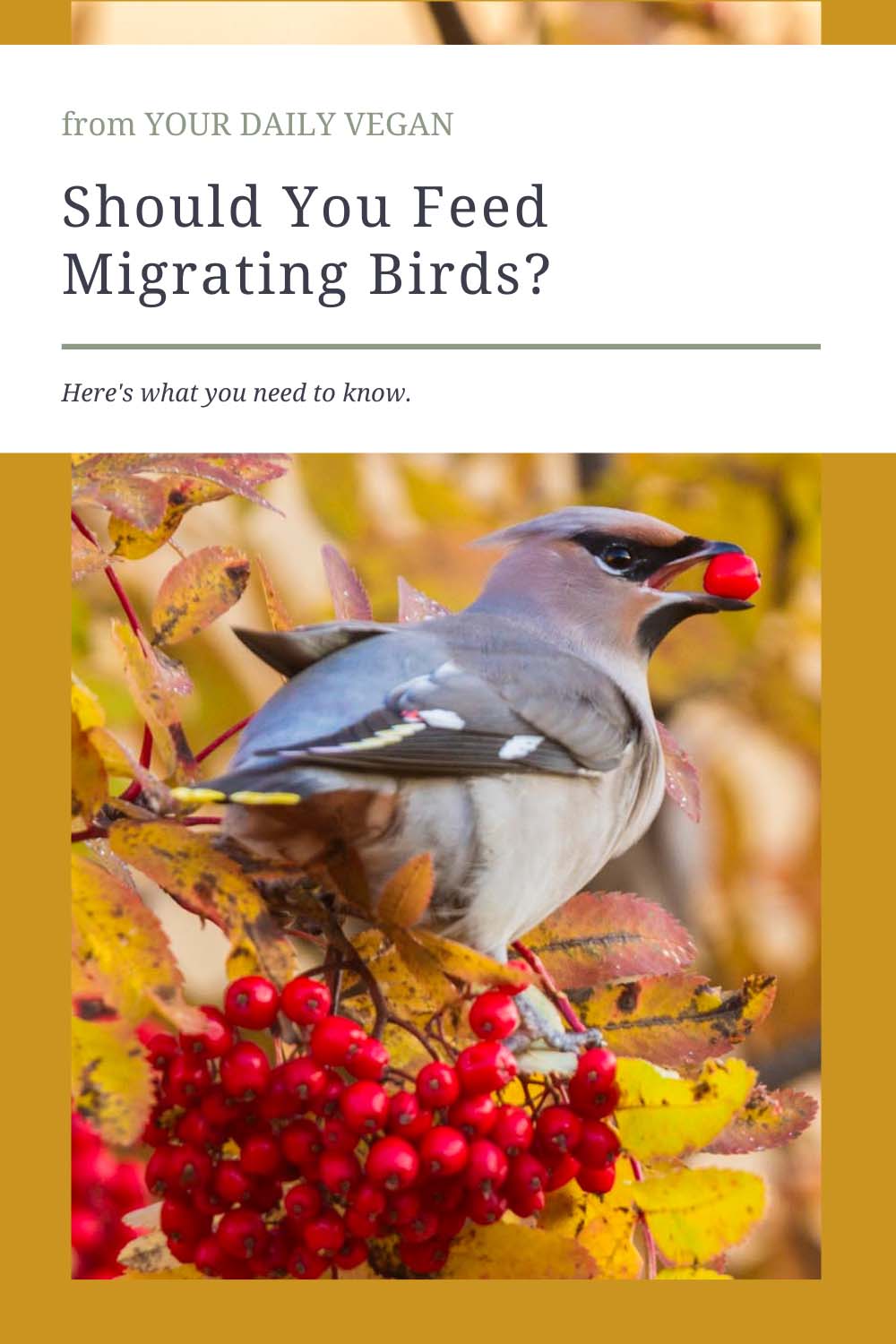
Truth in Advertising
I am committed to providing accurate information to the vegan community. Meticulously researched, the topic explored in this article contains the information available at the time of publishing.
I don’t just say it; I source it too.
Please contact me if you find incorrect data.

